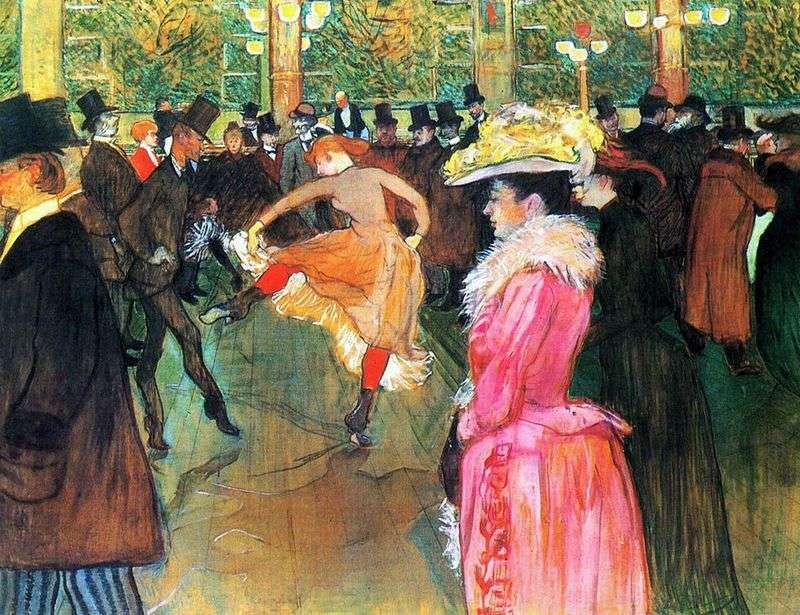
To the masterpieces of art is the painting “Dance in the Moulin Rouge”. By the time of the creation of the work, the versatility of the talent of Toulouse-Lautrec was fully revealed, and he could afford to portray both the Parisian life and any celebrity of secular society in the satirical, sometimes caustic manner, not pleasing the model, and phenomenal observation helped create the “document” of the era.
The painting opens a new cycle of works, illuminating the night life of the capital, and in it the artist captures the bright, incendiary dance of the celebrities “Moulin Rouge” – Valentine Le Decot, nicknamed “Boneless” and La Gulya. The main characters of the plot are depicted in an exaggerated form in the grotesque plan, even caricatured, and the viewer has the opportunity to “participate” in the event, for which the author left a gap in the foreground of the canvas. Cut off the left border of the canvas figure creates the feeling that the action continues beyond the picture.
In addition to dancing stars, the painting depicts famous metropolitan celebrities with whom Lautrec was friendly, and constantly “prescribed” them in his works.
This work was ordered by the director of “Moulin Rouge” Oller, and was preserved only in fragments. The sides of the picture were severely curtailed, since the canvas had impressive dimensions, and the space intended for it in the cabaret was not enough to fit it entirely.
 La gulyu in the Moulin Rouge by Henri de Toulouse-Lautrec
La gulyu in the Moulin Rouge by Henri de Toulouse-Lautrec In “Moulin Rouge” by Henri de Toulouse-Lautrec
In “Moulin Rouge” by Henri de Toulouse-Lautrec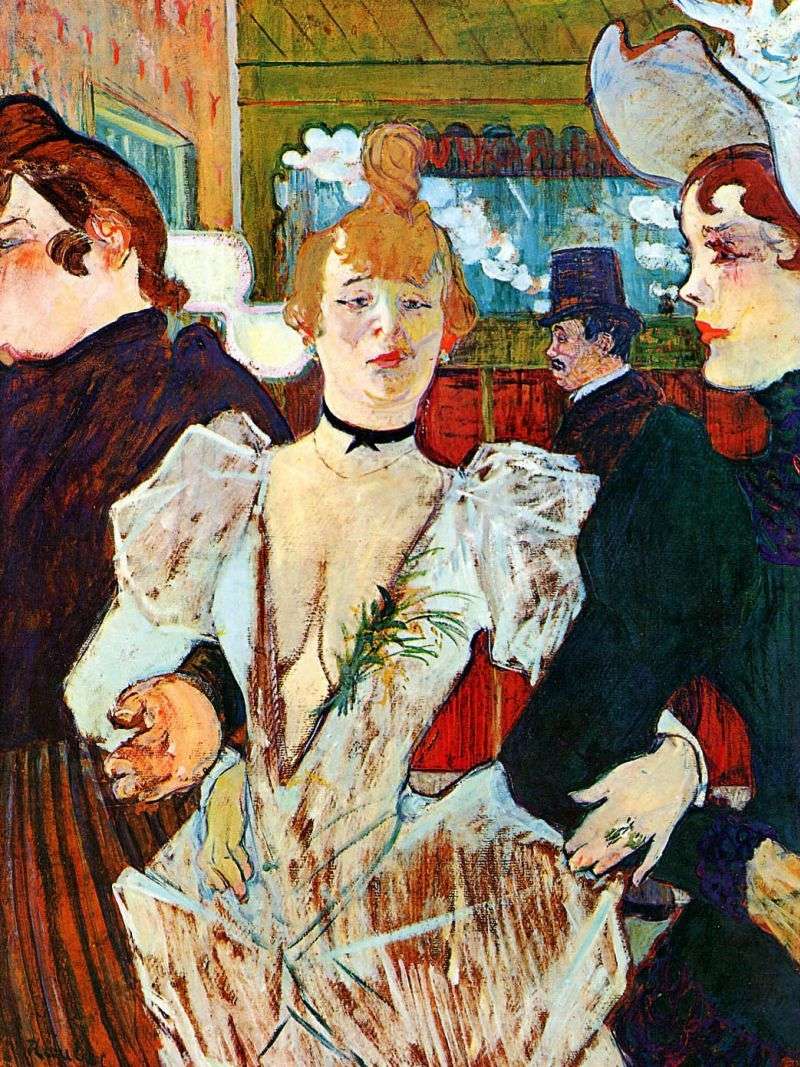 La Gulya, part of the “Moulin Rouge” with two women by Henri de Toulouse-Lautrec
La Gulya, part of the “Moulin Rouge” with two women by Henri de Toulouse-Lautrec Jane Avril, coming out of the Moulin Rouge by Henri de Toulouse-Lautrec
Jane Avril, coming out of the Moulin Rouge by Henri de Toulouse-Lautrec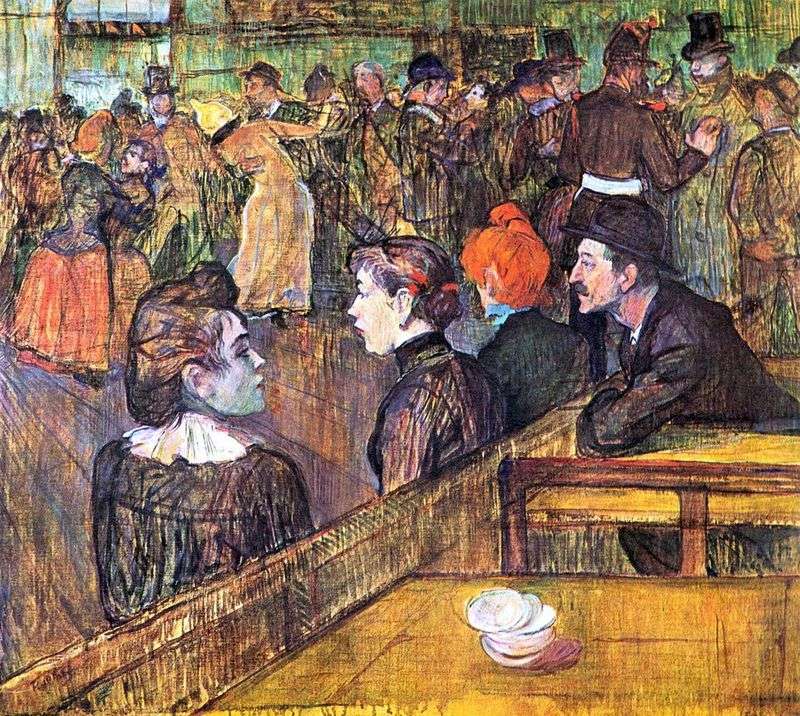 Ballroom in Moulin de la Galette by Henri de Toulouse-Lautrec
Ballroom in Moulin de la Galette by Henri de Toulouse-Lautrec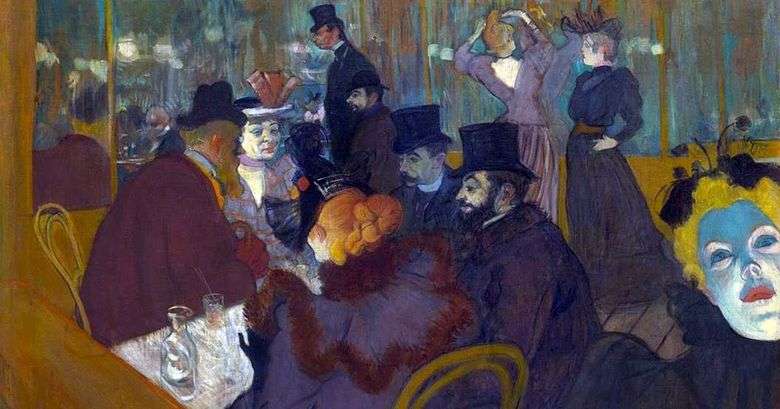 El Moulin Rouge – Henri de Toulouse-Lautrec
El Moulin Rouge – Henri de Toulouse-Lautrec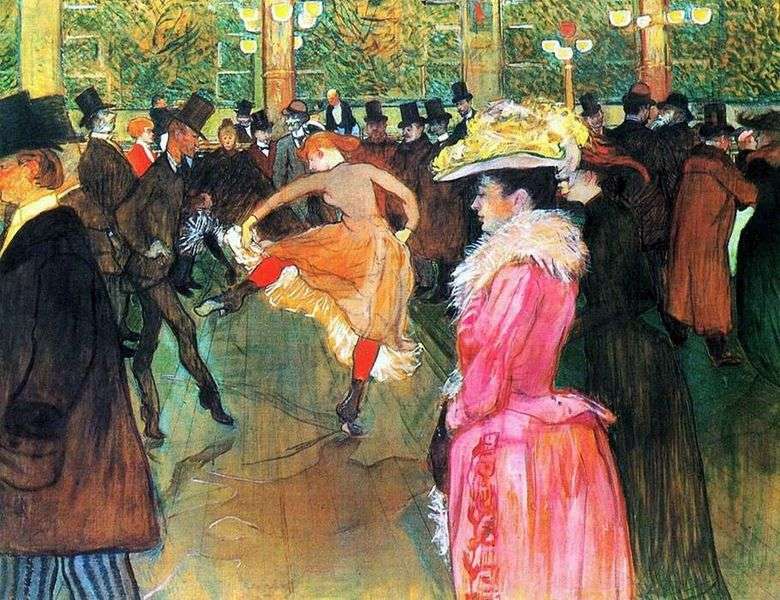 Baile en el Moulin Rouge – Henri de Toulouse-Lautrec
Baile en el Moulin Rouge – Henri de Toulouse-Lautrec Jane Avril, a member of the Moulin Rouge by Henri de Toulouse-Lautrec
Jane Avril, a member of the Moulin Rouge by Henri de Toulouse-Lautrec